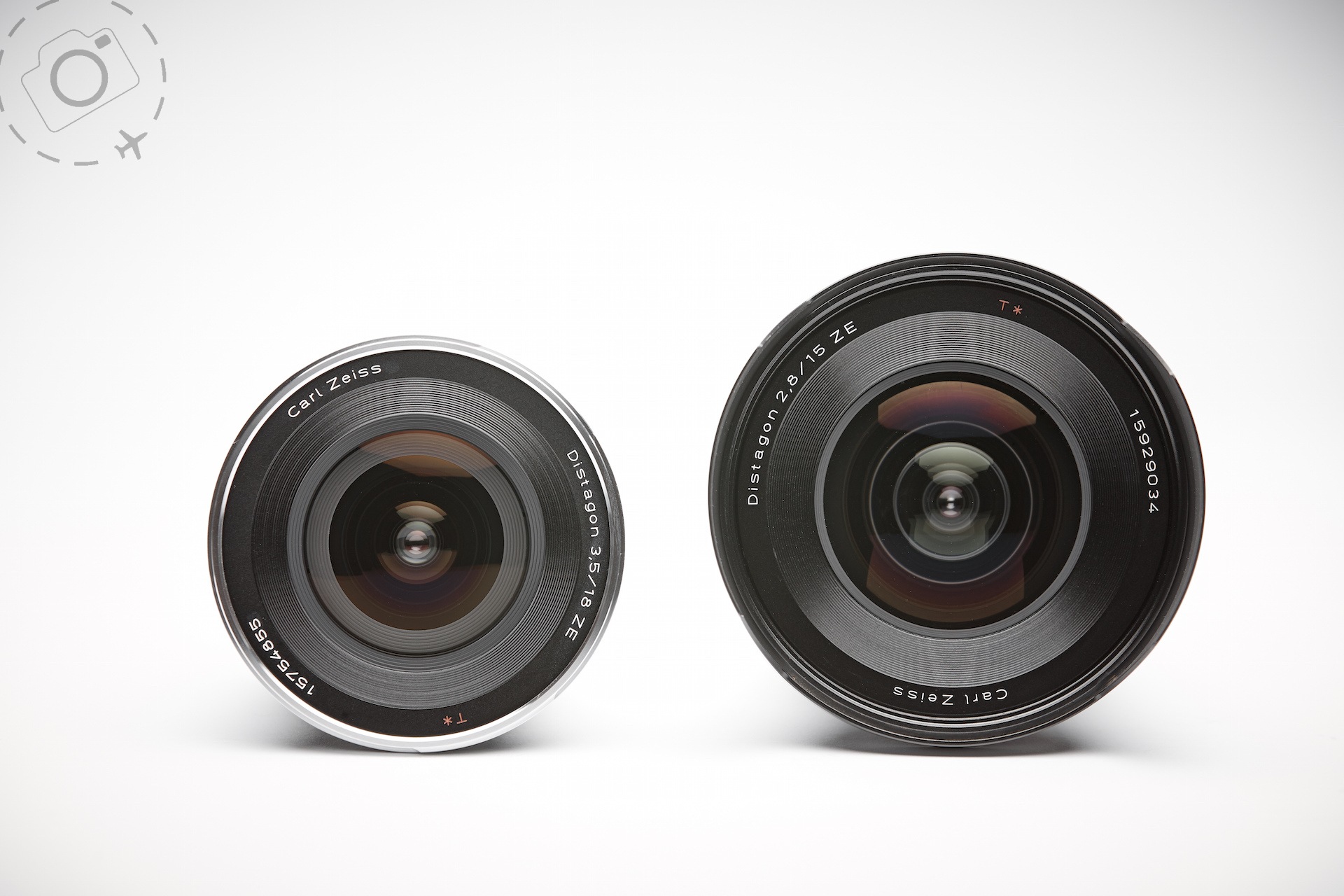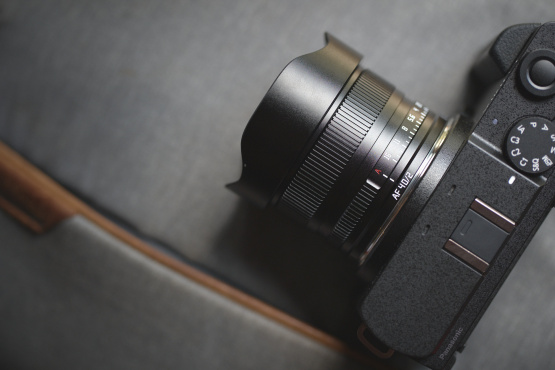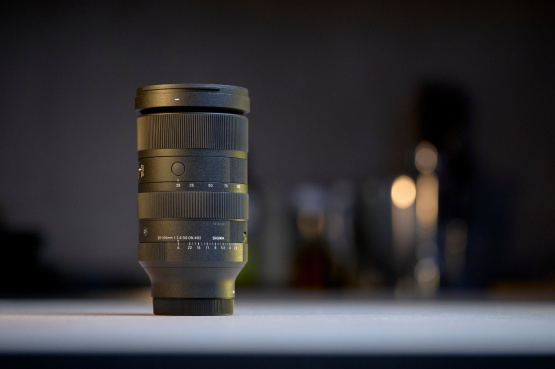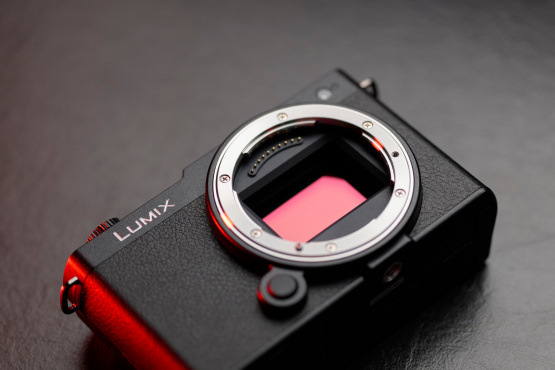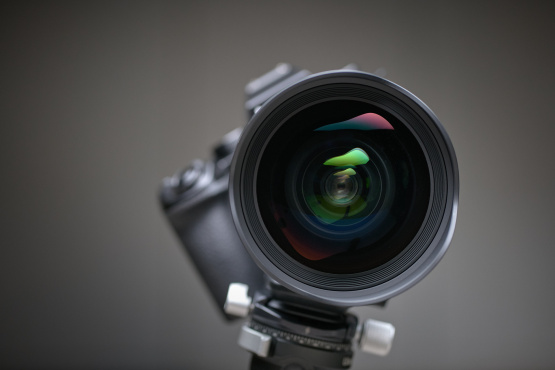There's no such thing as a bad DSLR these days, there are only degrees of excellence. Shopping for a camera body presents immense range of choices with modest variation in image quality. Ergonomics and features are where most models differ, the core imaging ability being rather good even at the entry level.
Lens shopping is a much less satisfying exercise. Most of us want similar things from our camera bodies, but when it comes to lenses there is no such thing as one-size-fits-all. Not only does consumer demand place difficult expectations on lens engineers but the laws of physics impose rather inconvenient constraints too.
Depending on how much image quality you're shooting for, the flexibility of your lens system is likely to be severely capped as you search for sharpness. It takes a lot of effort to design a very fast prime lens that opens wide to f/1.4 while limiting distortion or aberrations on the edges of the glass. Designing a zoom lens to come anywhere near close to the same quality as a prime is simply a bridge too far in most cases, and it's not just a matter of budget.
Most of us are not looking for the Holy Grail of lenses, we simply want something a little better than what we already have. If you own a 24-105mm f/4 then chances are you wish you had the same focal range in an f/2.8. If you own a 50mm f/1.8 then you might secretly covert your neighbours f/1.4. The glass is always faster on the other side of the fence.
The Devil Wears Schneider
Lenses are not made to fit like a pair of shoes, they follow physics and financials to build the best image quality within an identified budget. There's a reason so many great 70-200mm telephoto zooms exist on the market, because the physics of lenses hit a sweet spot through that range. Building a comparable quality 70-400mm lens has proved less practical or affordable.
The other sweet spot is the 24-70mm range, with several f/2.8 lenses on the market to suit a range of camera systems. If you're shooting on a full frame DSLR then this lens delivers the closest thing to one-size-fits-all, and yet owners will often comment that they wish it was a little wider and a little longer.
The more you shoot for quality the less perfect lenses seem to be. A few years ago I reviewed the low cost Sigma 150-500mm lens and were amazed at the quality of images we could get. The autofocus wasn't perfect and this lens probably wont survive being stomped by an elephant, but keep it high and dry and this light bit of kit will deliver some amazing wildlife shots.
In the same edition we also reviewed the Canon 600mm f/4 prime telephoto, which comes in close to ten times the Sigma for price and weight. The images it takes are clearly superior, it copes with low light far better and can be extended to 1200mm with Canon's 2x extender while still delivering good autofocus performance. Is the 600mm f/4 ten times better than a Sigma 150-500mm? The answer to that is highly subjective, but performance and price rarely have a linear relationship.
To get a little more image quality you often have to spend a lot more money.
Life Long Buddies
Shopping for a lens is tough stuff because for most people they will keep the lens for much longer than the camera. Unless you find yourself making the jump from partial-frame cameras to full-frame, you wont be ditching a lens until something tragic happens to it. It's a lot of pressure to choose well and a poor buying decision can dampen your enthusiasm for the entire art of photography.
Working out which lenses are good or bad for your situation is painfully difficult too, because quality and performance varies greatly within a single brand of lenses. Canon make some cracker professional gear, but they pump out some dreadful rubbish as well. It takes a fair bit of experience to learn which lenses within a range are the good ones and which fall short. Professional photographers talk amongst themselves and share this information, but not everybody is planning to invest that much money when they buy.
In the affordable end of the market brands like Tamron, Tokina and Sigma have been getting better at building good lenses. They rarely match the big boys for build quality, image quality or autofocus performance, but they're not trying to. Tamron's 24-70mm f/2.8 brings an affordable yet fast multi-purpose zoom into the realm of photographers who don't want to spend double the money on buying the best. The gap between the Tamron and the Nikon versions is not as great as it once was.
What's New is Old
A decade of digital imaging has pushed the abilities of lenses to their limits, and many lenses that were once regarded as supremely sharp are now relegated to "not quite good enough" when put in front of a digital sensor. Our expectations for image quality has changed over the last decade, highlighting the subjective nature of quality and sharpness.
How sharp does an image have to be in order to be sharp? It's a bit like depth of field, how out of focus can something be before you say it's no longer inside your depth of field? The sharper your imaging system the more demanding we get with these subjective measurements.
If you're shooting landscapes with a wonky old lens that lacks sharpness and detail then you're not going to notice so readily a loss in depth of field. Likewise you won't be hitting any dramas with diffraction limits if your entire image is soft to begin with.
Shopping for a lens to match the Nikon D810 is something of a challenge however. The resolution and image quality of the sensor is extremely hard to match within the physics of SLR lens design. Buying a better camera body often causes a rethink in what you had previously regarded as the best available lens.
My best advice when buying a camera is to invest more in the lenses than the camera itself. A $900 lens on an $800 camera will serve you better than a $200 lens on a $1500 camera. My other advice is always to seriously assess convenience versus quality, to decide for yourself how important the image quality is to you.
If convenience is what really matters then take a closer look at a Fuji X Series and skip the DSLR format entirely. Fuji build gorgeous lenses that deliver the best from the smaller APS-C sensor size. If instead your goal is creative control and imaging with the best possible RAW files then choose your lenses based on price and performance instead of weight and flexibility.
Hot Lenses
A few lenses have hit the market in recent years that push the boundaries of what we previously thought possible in the DSLR format. Better images for smaller budgets is what we’re seeing, with some amazing gear coming from Sigma and their Art Series in particular.
I’ve used a handful of the art series for professional purposes now, and I’m completely sold. Every one has delivered value and quality beyond the price tag.
50mm F1.4 DG HSM | A
This is a serious alternative to the fast-fifty options by Canon and Nikon. It’s sharper than the best 50mm by Canon, the f/1.2 and the autofocus is almost as good. We use this all the time in the studio, it’s been a great workhorse and has less optical flaws to correct in processing as well. Solid and beautiful.
http://sigmaphoto.com.au/lenses/50mm-f14-dg-hsm
35mm F1.4 DG HSM
A very fast photo journalist lens that pulls in a little more context than your standard 50mm. Lovely bokeh at f/1.4 and my clients have loved this perspective. Also good for food photography when you want a slightly more generous field of view to change up your style.
http://sigmaphoto.com.au/lenses/35mm-f14-dg-hsm
24mm F1.4 DG HSM | A
I love shooting very wide and very fast, so the 24mm f/1.4 combination is my home base. The Sigma lens is every bit as good as the Canon version, but for much less money. This style of prime lens wont suit everybody, but for those who know that a fast 24mm is where their creativity lies you have to look at the Sigma option before spending the extra for a Nikon or Canon.
http://sigmaphoto.com.au/lenses/24mm-f14-dg-hsm
150-600mm F5-6.3 DG OS HSM | S
When we first reviewed this lens a lot of people thought the f/5-6.3 aperture indicated it wouldn’t be very good. They were wrong. The lens delivers gorgeous bokeh at f/6.3 and really sharp images. It’s a big lens though and awkward to drive. I took it to Scotland to chase puffins and was sooooo glad I did!
http://sigmaphoto.com.au/lenses/150-600mm-f5-63-dg-os-hsm-s
Evolution
The biggest mistake people make when buying a lens is thinking they can get it right first time. It takes experience to work out which lenses work best for you. Over time the best lens may no longer suit your needs, as your style changes and as the technology moves forward.
More often than not I see people who are holding themselves back by holding onto an old lens. I listen to them cite reasons of convenience and cost. I give a little sigh. Your choice of creative tools has such dramatic impact on your creative expression. Zoom lenses are my biggest annoyance, trading the practicality of a mid-range zoom for the beauty of a fast prime.
I’ve learned that you need very few lenses. Camera bags need not be heavy. Don’t buy a zoom lens or a smaller camera system, just stop carrying so many lenses around. With the exception of wildlife, a fast 50mm and 24mm will do most things and all else is luxury.
But give yourself time to reach the point of maturity with your lens choices. Allow yourself to try a lens, and then sell it again as you determine it’s the wrong fit. It’s a deeply personal choice as to what works best for you, and you have to live it to know it.

Keep Reading
Join Ewen's newsletter for monthly updates on new photography articles and tour offers...Subscribe Here

